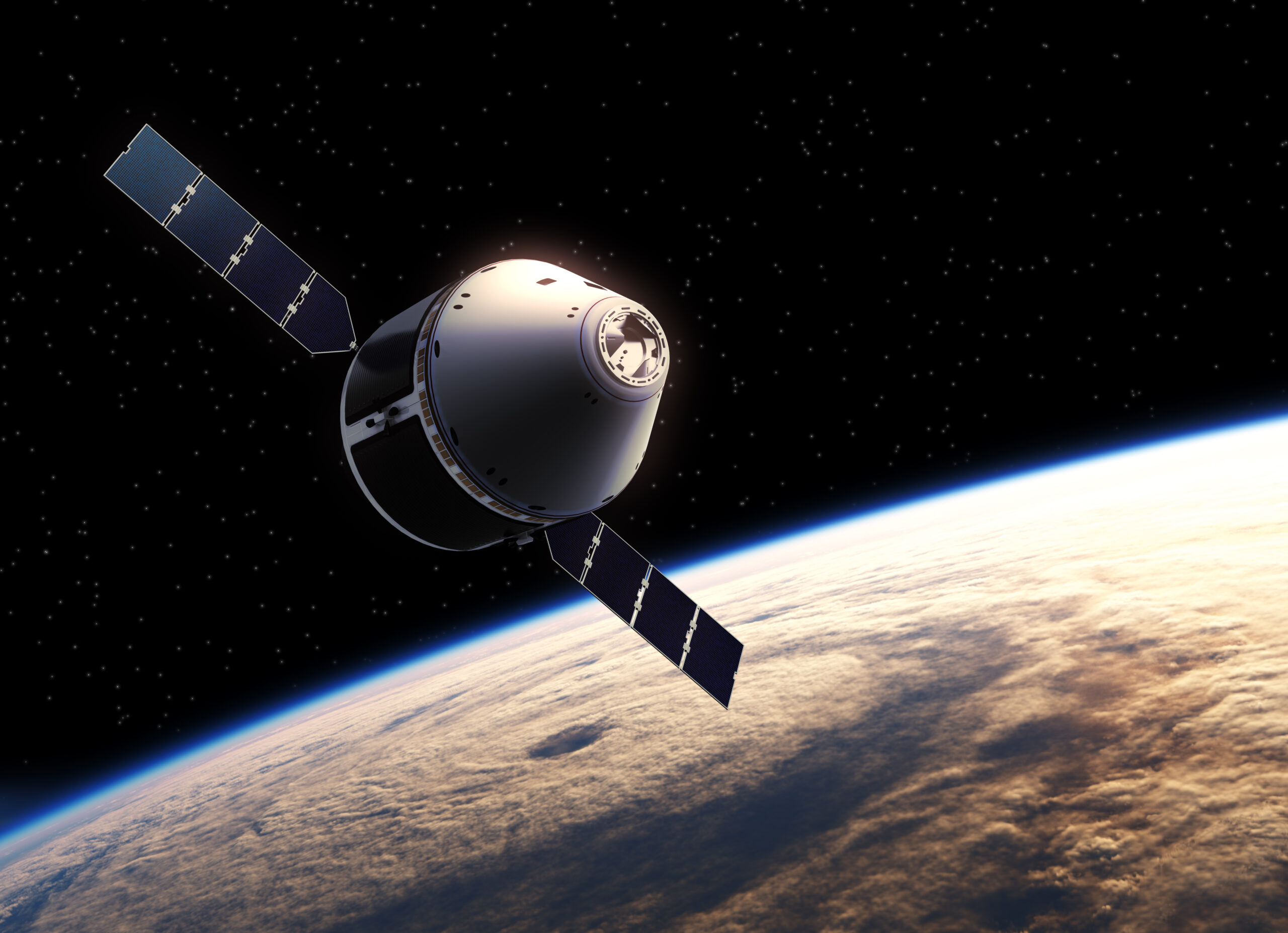Reaching Closed-Loop Optimization Part One – Transcript – Talking Aerospace Today

In this episode of Talking Aerospace Today, Todd Tuthill is joined by Thierry Olbrechts to introduce the final stage of digital transformation maturity: closed-loop optimization.
Patty Russo: Greetings and welcome to another episode of Talking Aerospace Today from Siemens Digital industries Software. I’m Patty Russo and I’m responsible for global marketing for the aerospace and defense vertical here at Siemens. Thank you so much for joining our conversations. Over the course of this podcast, we’ve explored many facets of digital transformation maturity. We’ve discussed why it’s needed in the aerospace and defense industry, we’ve delved into the stages of automation and generative design, and we’ve introduced the role that AI and ML will play in digital transformation. Today we’re reaching the end of this part of our journey where we’ll explore digital transformation maturity’s, final stage, closed-loop optimization.
Patty Russo: Once again, we’re joined by Todd Tuthill, Vice president of A&D at Siemens Digital Industries software. Again, welcome, Todd.
Todd Tuthill: Yeah. Thank you, Patty. And thank you all our listeners who made the journey with us. I think we started maybe back in July or August of last year with this journey thinking, I was thinking it’d be maybe five or six podcasts and it’s turned into about 15 or 16, I think. So, thank you for taking the journey with us, and if you just finding the podcast now and trying to learn more about digital transformation, I encourage you to go back and listen to some of those earlier episodes to set some context to what we’re at.
Patty Russo: Awesome. We also today have a guest for this segment, and I’m happy to introduce Thierry Olbrechts, director of aerospace industry solutions for the simulation and testing portfolio within Siemens Xcelerator. Welcome, Thierry.
Thierry Olbrechts: Thanks for having me and always happy to talk about our passion related to the space industry.
Patty Russo: Outstanding. Yeah, I’m looking forward to a dynamic conversation today. Okay, so Todd, let’s start this conversation today with a quick rundown of what we talked about previously as it relates to digital transformation maturity and how that’s led to where we are today.
Todd Tuthill: Digital transformation maturity as we talk about it is a five-step method for companies to understand where they’re at and where they need to go. And the first step is configuration. The second step is connection. The third step is automation. The fourth step is generative design, and the fifth step is closed-loop optimization and there are a series of podcasts that really focus on the first four. Today, we’re going to focus on closed-loop optimization and if you think about the last few podcasts we talked about generative design with Tony Nicoli in electrical, and generative design with John O’Connor in mechanical, and those really build up to what we’re going to talk about today.
Patty Russo: So can you define closed-loop optimization in the context of digital transformation maturity, Todd.
Todd Tuthill: Absolutely. Let’s start with the problem we’re trying to solve. The problem we’re trying to solve is really time. We talk about workforce and time a lot in the context of digital transformation maturity, but time is really key to why closed-loop optimization can help companies so much. Let’s look at an example. Let’s say I’m trying to design this blended wing aircraft, this kind of new aircraft design that several companies are talking about, and I’m considering various trades. Do I want a fossil fuel based propulsion system, or would I rather look at hydrogen? And companies are looking at, maybe it’s a transport aircraft. Maybe it’s an aircraft to carry passengers. And just think about the different kinds of trades and the different kinds of effects that that one decision. What’s my fuel? Well, how’s my propulsion going to work?
Todd Tuthill: Think about how that affects the entire aircraft, how it affects the structures, how it affects the control system and the power, how it affects how fuel is stored, how it affects what the range of the aircraft can be. And you think about that in the context of how an engineering company is organized and how an engineering company works. Because at the end of the day, we engineers, we like to say what we’re very much involved in science, but I like to say the difference between an engineer and a scientist is a scientist is working on theories and coming up with great ideas. Engineers have to ship products that make money.
Todd Tuthill: So eventually, if you’re designing this blended wing aircraft, there’s a data out there in the future where you’ve got to have a critical design review finish your design, start building it, and produce things that make money, and the realities of those time frames in engineering mean that there’s a finite number of design iterations that you can do. And in the past, you know, when I worked on several large aircraft programs, that number of design iterations is pretty limited. Sometimes there’s some early trade studies we do, but once we start really looking at things like how do I lay out the wing? How do I lay out the wiring? What avionics do I need to use? What’s my certification program going to look like?
Todd Tuthill: There’s just a few, maybe five, maybe six, seven iterations that that can happen, what I’ve seen that lead to, you know, a lot of the companies I’ve worked with, a lot of the programs I’ve worked on is what I call suboptimization, and that happens when a mechanical team is looking at the structure of the aircraft, maybe a flight control team is looking at the way the flight controls work, the electrical team is designing the electronics and maybe the layout of the aircraft, and the fuel team is designing the fuel system. They all work in parallel. They all have individual goals and sets of requirements they’ve been giving given to meet. And as one team comes up with a good idea, maybe the aerodynamicists decide to change the outer mold line of the of the aircraft a bit, that has a big effect on those teams.
Todd Tuthill: And the mechanical team tends to optimize for their particular mechanical design, not necessarily for the design of the whole aircraft, because there’s just not enough time to pass all those designs, all those decisions and all that engineering among all the teams to say, well, if I design the flight controls this way, then maybe I can really reduce the weight of the structure and there’s only so many times we can play that back and forth that becomes up suboptimized. What closed-loop optimization lets you do is it automates a lot of those connections and a lot of those decisions because, as we say, if I can design an aircraft, design a system once, generatively inside a computer, and then I can put that into feed that into a simulation, and really evaluate that in the digital twin, I can pull that back in, pull the output of that simulation and learn from that and say, “Let’s initiate another automated design.” And maybe what I can do in designing my aircraft, maybe rather than designing the aircraft five, six, seven, ten times, maybe I can design that aircraft five, six, seven, ten thousand times.
Todd Tuthill: If I’ve automated a lot of those things. That’s the real promise of closed-loop optimization, but I’ve talked about an aircraft example. So good to have Thierry on the broadcast with us because Thierry is really one of the people that I’m proud to know and work with here at Siemens, who really has a strong interest and a very strong background in space. Thierry, I’m wondering if you have some examples of what’s happened in the past and how this can be used with respect to space.
Thierry Olbrechts: Well, thank you, Todd, and yes. I’m always, always interested in how engineering of space systems happened in the past and how certain problems could have been solved by using digitalization capabilities that we have today and learn actually from what happened in the past. And one of my favorite projects, as you know, Todd is, the Apollo project. You know, I was actually born in the middle of the Apollo project and what always amazes me is how fast that project was actually put in place and how fast that project actually reached the fairly simple goal that JF Kennedy actually defined at the beginning of the 60s, actually ‘62, where he said, “Well, let’s go to the moon and bring back the astronauts in a safe way before the end of the decade.”
Thierry Olbrechts: It’s yeah, it was a great challenge. And when looking at the program and the program kickoff in 62 and actually in ‘68, the Apollo 8 program actually made the first travel to the moon, made some orbits around the Moon, came back. And of course, in ’69, July ’69, Apollo 11 landed on the moon. So when you compare that to that kind of development where you have that development happening in six to seven years, being successful in six to seven years, it always amazes me like for instance, new aircraft programs typically take 10 to 11 years to complete and to enter into service. Well, in a certain way you could say, well, is digitalization slowing us down?
Thierry Olbrechts: I often put that that question in front of our colleagues or customers when having discussions. But there’s something that we really forget about how that development happened. Actually it required in the 60s around 400,000 people to develop the Apollo project. It required something like $25 billion at that moment and that’s comparable to $200 billion today. 4.6% of the US budget was going in the middle of the 60s to the Apollo project. And of course, that’s not comparable to the typical 30,000 people you need to develop a wide body aircraft, or when you compare it to SpaceX where they are developing fairly similar capabilities.
Thierry Olbrechts: Launch capabilities, manned spacecraft capabilities, rocket engines, all by their own. It requires today something like 10,000 to 15,000 people to develop these kinds of systems. So something happened, Todd, here, and I believe that digitalization is really one of the elements that really has reduced the amount of people you need 50 years ago to develop a launch system to develop a spacecraft. Let’s say that the amount of people and the amount and the costs needed to develop that basically went one order of magnitude down.
Patty Russo: So, Thierry, I think you anticipated my next question. So I’m going to ask a different question. What you just talked about was the essentially reduction in workforce. A way that closed-loop optimization and digital transformation can help address that need. When you look at if it took 400,000 people to develop the Apollo program and we’re looking at 10 to 15 thousand people today to do, you know, to develop an aircraft program. Can you talk a little bit about what that looks like in terms of what they’re able to do? So, what power do those now 10 to 15 thousand people have as a result of this technology and the advances in technology and closed-loop optimization that they didn’t have before and where maybe the most impact can be relative to using engineers to do that really critical engineering work?
Thierry Olbrechts: You know, the calculation capabilities that we have today, the computational power that we have today and the different modeling capabilities, whether it’s an electrical system modeling, whether it’s a mechanical design, electrical design modeling, whether it’s, let’s say, physical simulation capabilities that we have today, all of them allow to basically make models and to do everything that happened in the past in a manual way, to do that in a digital way. And as Todd explained, when you are able to connect all these models and keep the configuration, that takes a lot of the overhead away of the program that is being developed.
Thierry Olbrechts: Secondly, when you can use all these different connected models together, you can start to implement automated processes, automated workflows that allow to do more optimization in a shorter time and create a much more detailed insight in how your system, how your components will behave. And I believe there’s another possibility today that we often forget about. So when you look at the spacecraft, it’s an integration of several systems. In the past, let’s say all these different systems were developed in silos. Today, these digital models can basically, be created in a connected to way you tear down the barriers between the different departments and disciplines that are involved in this development and by doing so you can create much more elegant, much more. elegant engineering workflows.
Todd Tuthill: Thierry if I could. Because, you know, I want to use your experience in the Apollo program. Let’s see if, I don’t know, if I can make a fool out of myself because you know way better than me. But I remember there was this problem with I think the second stage of the Saturn V, where there was, I believe it was an instability inside the engine they called Pogo and I think we lost a couple of Saturn Vs that were launched. Fortunately, unmanned and that really threatened the Apollo program, and I wonder if you could kind of give our listeners an idea of how that product really, really complex physics problem was solved then, and maybe how that could be, what we learned from that and how a problem that could be solved today with some of the modern simulation techniques that you work with.
Thierry Olbrechts: Well, yes, indeed, Todd. Very early in the program and during one of the first flight tests, one of the Saturn Rockets actually experienced very heavy vibrations, which were actually caused by fluid dynamic interactions between, let’s say, the fuel tanks on one side which are connected to the engine through the fuel pipes, and actually a pogo phenomenon happened at that caused the vibrations. Well, today actually simulation capabilities are available to actually identify that very early in the program and avoid that kind of problem and avoid the delays in the program and reduce the risk.
Thierry Olbrechts: So the capabilities today, they do not only, or they are not only capable to model the different components in an isolated way, the models of today, they can also be used to create a more integrated model of the spacecraft and give you engineering insight of how that spacecraft will behave during operations.
Patty Russo: As you’ve just heard from Todd and Thierry, closed-loop optimization obviously offers many benefits. But we are up against our time for today and we need to wrap up the discuss. But never fear. We will pick this up again next time. Thank you to Todd and Thierry, and thank you to our listeners for joining today’s conversation. I’m your host, Patty Russo. We invite you to join us for the next episode of Talking Aerospace Today.
Siemens Digital Industries Software helps organizations of all sizes digitally transform using software, hardware and services from the Siemens Xcelerator business platform. Siemens’ software and the comprehensive digital twin enable companies to optimize their design, engineering and manufacturing processes to turn today’s ideas into the sustainable products of the future. From chips to entire systems, from product to process, across all industries. Siemens Digital Industries Software – Accelerating transformation.


